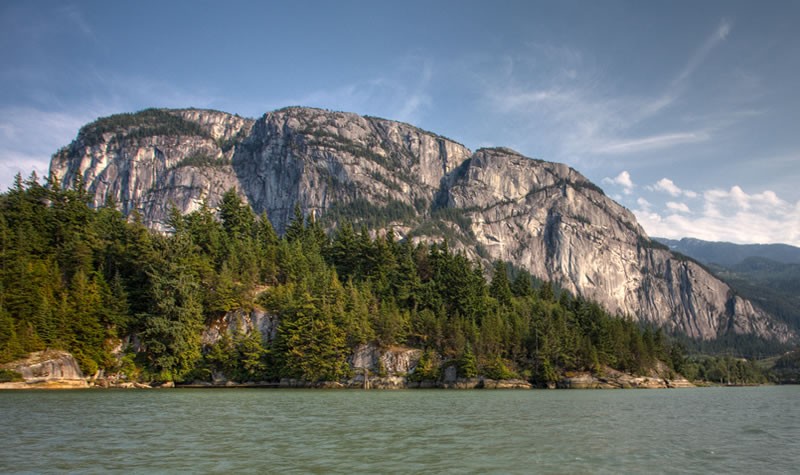Everything you want to know about Squamish

Thousands of climbers roll into Squamish every year in search of that granite fix the area is known for.
In 2008, Kevin McLane, the author of many of the now-famous Squamish guidebooks, authored a report title Squamish Climbing Strategy Report. The report is a document which outlines how the West Coast community can work toward a sustainable future.
The Ministry of Environment (BC Parks), the District of Squamish, and the Sea to Sky Highway Improvement Project (MOT) commissioned the Squamish Access Society to produce this comprehensive analysis report on the present state of climbing at Squamish, British Columbia.
Notes from the report
The Stawamus Chief, better known simply as ‘The Chief’ is one of the most famous rock climbing centres in the world, the premier climbing centre in Canada, and the most popular hiking peak in Canada. Its high international exposure on the Sea to Sky Highway and over a quarter of a million annual visits from climbers and hikers have established the Chief as the premier frontcountry provincial park in British
Columbia. The traditional name by which the Big Stone is known to Squamish Nation, is Siyam: ‘Respected One’, adds further testament to this.
The reasons for this lie in the extraordinary shape of its wonderful granite dome, its open rocky summits,the immaculate rock, the hundreds of splitter cracks, the long demanding free climbs, the hundreds of largeboulders scattered along its western and northern walls, the stunning summit views, the short approach, the Pacific Ocean, urban Squamish and its estuary below, and a major city an hour away. With the Malamute at the ocean’s edge and the nearby Smoke Bluffs Park, Murrin Park, Shannon Falls Park, and Skwelwil’em
Wildlife Area in the estuary, there is a very wide range of climbing, hiking and viewing experiences in one compact area.
Scope
The study area is rock climbing and bouldering at Squamish, as understood within its branding as the Outdoor Recreational Capital of Canada, and principally addresses Stawamus Chief Provincial Park, Shannon Falls Provincial Park, Murrin Provincial Park, and Smoke Bluffs Municipal Park, with commentary on the wider region from south of Britannia Beach to the Cheakamus Canyon.
Purpose
Based on the sustained historic growth rate of five-per cent to seven-per cent annually, the projected number of rock climbers visiting this region is estimated to double within eight to 12 years. With this in mind, the report seeks to present a comprehensive portrait and analysis of the infrastructure of Squamish climbing as it is today, and recommend actions to absorb growth and establish a sustainable recreation asset management program based on the three Smart growth pillars of environmental, social, and economic planning.
For more from the report see here:
Squamish Climbing Strategy Report



